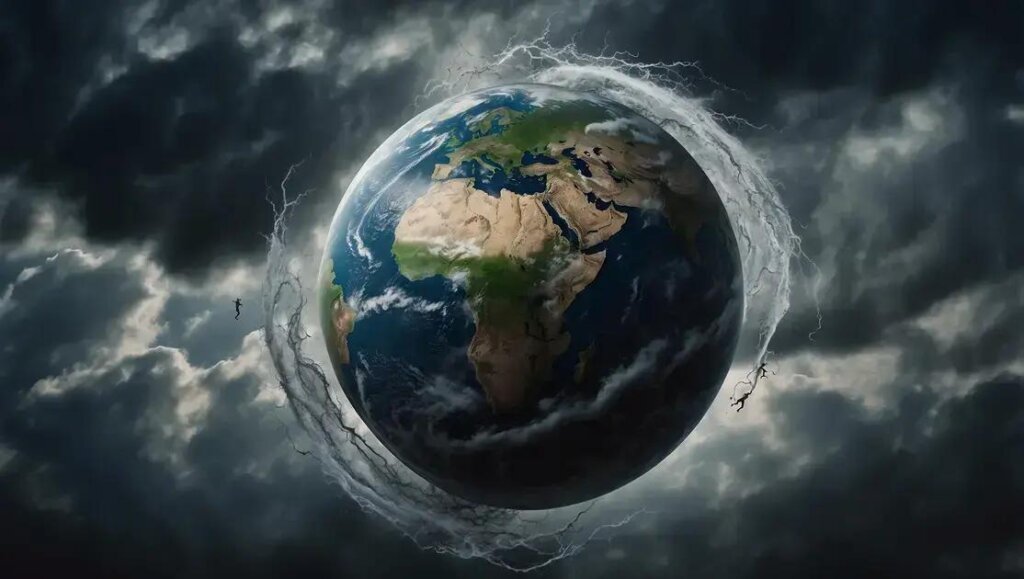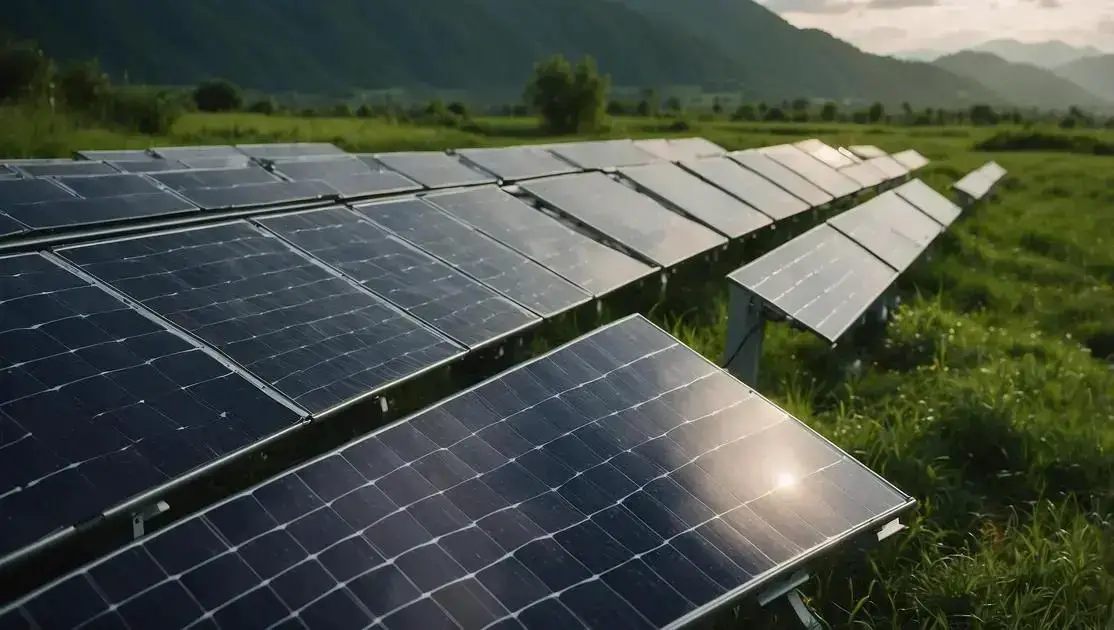Climate Change is perhaps the most critical challenge faced by our planet today. It threatens our climate systems and disrupts ecosystems globally. In this article, we will delve into the causes of climate change, its effects on our environment, and what we can do to combat it together. By understanding our role, we can contribute to a healthier planet for future generations.
Table of Contents
ToggleWhat is Climate Change?
Climate Change refers to significant and lasting changes in the Earth’s climate patterns. It primarily pertains to the increase in average global temperatures caused by human activities, especially the burning of fossil fuels. These activities release greenhouse gases, which trap heat in the atmosphere. This process leads to various environmental challenges.
Why is it Important?
Understanding climate change is crucial as it affects everyone. It impacts weather conditions, sea levels, and biodiversity. As temperatures rise, extreme weather events become more common. Events like hurricanes, droughts, and floods can have devastating effects on communities and ecosystems.
Key Components
Climate change can be broken down into two major components: natural climate variability and human-induced changes. Natural variability includes phenomena like volcanic eruptions and solar cycles, while human-induced changes result from industrial activities, deforestation, and agricultural practices.
Global Warming
One of the most critical aspects of climate change is global warming. This phenomenon refers to the increase in Earth’s average surface temperature. It occurs primarily due to the accumulation of greenhouse gases like carbon dioxide (CO2), methane (CH4), and nitrous oxide (N2O).
International Response
Countries around the world have recognized the need to address climate change. Agreements like the Paris Agreement aim to limit global warming to below 2 degrees Celsius. These efforts involve collaboration and commitment to reduce emissions and invest in renewable energy sources.
Causes of Climate Change
There are several significant causes of climate change, and understanding them is vital for addressing the issue effectively. The primary driver is the increase in greenhouse gases (GHGs), which trap heat in the atmosphere. The main sources of these gases include:
1. Fossil Fuels
The burning of fossil fuels like coal, oil, and natural gas for energy is the largest source of carbon dioxide (CO2) emissions. Power plants, automobiles, and industrial activities contribute heavily to this increase.
2. Deforestation
Forests absorb CO2 from the atmosphere. When trees are cut down for agriculture or urban development, that stored carbon is released, adding to the greenhouse effect.
3. Agriculture
Agricultural practices can produce significant amounts of greenhouse gases. For instance, methane (CH4) is released from rice paddies and livestock, while nitrogen-based fertilizers lead to emissions of nitrous oxide (N2O).
4. Industrial Processes
Manufacturing and industrial processes also contribute to climate change. Many products release GHGs during their creation, including cement, metals, and chemicals.
5. Waste Management
Landfills produce methane as organic waste decomposes. Management of solid waste is critical in reducing emissions that arise from this source.
6. Transportation
Transportation is another significant contributor. Cars, trucks, and airplanes consume fossil fuels and emit CO2 and other harmful gases into the atmosphere.
Natural Factors
While human activities play a significant role, natural factors can also contribute to climate change. Volcanic eruptions and solar radiation variations can influence the Earth’s climate systems.
Effects of Climate Change on the Environment
The effects of climate change on the environment are profound and far-reaching. As global temperatures rise, various natural systems are disrupted, leading to significant changes across several factors:
1. Rising Sea Levels
As ice caps and glaciers melt, sea levels rise. This increase threatens coastal communities, causing more frequent flooding and erosion.
2. Changes in Weather Patterns
Climate change leads to altered weather patterns, causing more intense storms, droughts, and heavy rainfall. These shifts can disrupt local ecosystems and agriculture.
3. Ocean Acidification
The increased absorption of carbon dioxide by oceans results in ocean acidification, harming marine life, especially organisms with calcium carbonate shells, such as corals and shellfish.
4. Habitat Loss
Many species face habitat loss due to changing climates. Forests, wetlands, and coral reefs are affected, which can lead to declines in biodiversity.
5. Disruption of Ecosystems
Shifts in temperature and precipitation affect ecosystems and the organisms that depend on them. For instance, some species may struggle to adapt and could face extinction.
6. Threat to Biodiversity
Climate change presents a significant threat to biodiversity. Many plant and animal species may not be able to migrate quickly enough to survive in their changing habitats.
7. Impact on Agriculture
Changes in temperature and precipitation patterns can affect crop yields, leading to food insecurity in some regions. Farmers may struggle with increased pests and diseases as well.
8. Melting Glaciers
Glaciers act as natural water reservoirs. Their melting can lead to freshwater shortages in regions that rely on glacial melt for drinking water and irrigation.
9. Increased Wildfires
Higher temperatures and prolonged dry spells increase the likelihood of wildfires. These can devastate large areas of forest, harm wildlife, and contribute further to carbon emissions.
Impact of Climate Change on Human Health
The impact of climate change on human health is a serious concern that affects everyone. As the climate continues to change, various aspects of health can be compromised:
1. Respiratory Issues
Increased air pollution from burning fossil fuels contributes to respiratory problems. Higher levels of ozone can cause asthma and other lung diseases.
2. Heat-Related Illnesses
As temperatures rise, so does the risk of heat-related illnesses. Heat exhaustion and heat strokes become more common, especially among vulnerable populations like the elderly.
3. Waterborne Diseases
Climate change impacts water quality through flooding and higher temperatures. These conditions can lead to an increase in waterborne diseases such as cholera and giardiasis.
4. Vector-Borne Diseases
The spread of diseases like malaria and dengue fever can increase as warmer climates enable mosquitoes and ticks to thrive in new regions.
5. Food Security
Climate change affects crop yields due to changing weather patterns. Food shortages can lead to malnutrition and related health issues, particularly in developing nations.
6. Mental Health Effects
Natural disasters linked to climate change, such as hurricanes and wildfires, can cause trauma and stress. These events can have lasting effects on mental health and well-being.
7. Impacts on the Elderly and Children
The worst effects of climate change hit vulnerable groups the hardest. The elderly and children are particularly susceptible to heat stress and health complications from pollution.
8. Displacement and Migration
As climate change exacerbates natural disasters, people may be forced to leave their homes. Displacement can lead to additional health risks in refugee populations.
9. Disruption of Health Services
Extreme weather events can impede access to healthcare services. Hospitals may be damaged, and supply chains for medications can be disrupted, leading to a decline in public health.
The Role of Fossil Fuels in Climate Change
The role of fossil fuels in climate change is critical to understanding how human activities impact the environment. Fossil fuels, including coal, oil, and natural gas, are the primary source of energy worldwide. Their combustion releases significant amounts of greenhouse gases (GHGs) into the atmosphere. Here are key points about their role:
1. Greenhouse Gas Emissions
When fossil fuels are burned for energy, they release carbon dioxide (CO2) and other GHGs. These gases trap heat in the atmosphere, leading to global warming.
2. Major Contributors to Climate Change
Fossil fuels are responsible for the majority of global CO2 emissions. This makes them a significant driver of climate change effects, such as rising temperatures and extreme weather.
3. Energy Production
Power plants that burn fossil fuels generate electricity for homes and industries. However, this comes at a high environmental cost, as they often emit large quantities of GHGs.
4. Transportation Sector
Vehicles powered by gasoline and diesel contribute substantially to fossil fuel emissions. The transportation sector is one of the largest sources of emissions globally.
5. Industrial Uses
Many industrial processes rely on fossil fuels, from manufacturing goods to heating buildings. This reliance increases overall emissions and impacts climate change.
6. The Importance of Transitioning
To combat climate change, experts stress the need to transition away from fossil fuels. This means investing in renewable energy sources like solar, wind, and hydroelectric power.
7. Economic Impacts
While fossil fuels have driven economic growth, their environmental costs are increasingly clear. Shifting to greener alternatives can also provide economic opportunities through new jobs in renewable energy.
8. Political and Global Challenges
The reliance on fossil fuels presents challenges for global policies aimed at reducing emissions. Nations must work together to create effective solutions for transitioning energy sources.
Innovations to Combat Climate Change
Innovations to combat climate change are essential for creating a sustainable future. Amazing advancements are being made, and these can help reduce emissions and protect the environment:
1. Renewable Energy Technologies
Solar, wind, and hydroelectric power are becoming more efficient and cost-effective. These renewable energy sources significantly reduce our reliance on fossil fuels.
2. Energy Storage Solutions
Advancements in energy storage, like batteries and other technologies, allow us to store renewable energy for use when the sun isn’t shining or the wind isn’t blowing.
3. Smart Grids
Smart grid technologies enable more efficient energy distribution. They help manage energy demand and reduce waste, allowing for more energy generation from renewable sources.
4. Carbon Capture and Storage (CCS)
CCS technology captures CO2 emissions from power plants and industrial sources. This captured carbon can be stored underground, preventing it from entering the atmosphere.
5. Sustainable Agriculture
Innovations in agriculture, such as vertical farming and precision farming techniques, aim to produce food more sustainably and efficiently while using fewer resources.
6. Electric Vehicles (EVs)
Electric vehicles produce no tailpipe emissions. The growing adoption of EVs helps reduce greenhouse gas emissions from the transportation sector.
7. Green Building Practices
Innovative building designs use sustainable materials and energy-efficient technologies. Green buildings reduce energy consumption and environmental impact.
8. Climate Engineering
Some scientists explore climate engineering technologies to counteract climate change. These include solar radiation management or large-scale afforestation to absorb CO2.
9. Recycling and Waste Management Innovations
Improved recycling technologies can help keep waste out of landfills and reduce emissions associated with manufacturing new products from raw materials.
How Individuals Can Make a Difference
Individuals play a vital role in combating climate change. Small actions can lead to significant impacts when many people participate. Here are ways individuals can make a difference:
1. Reduce, Reuse, Recycle
Minimizing waste is essential. Try to reduce what you consume, reuse items when possible, and recycle materials like paper, plastic, and glass to decrease landfill waste.
2. Save Energy
Conserve energy by turning off lights and unplugging devices when not in use. Consider using energy-efficient appliances and LED lights to lower electricity consumption.
3. Use Public Transportation
Whenever possible, use public transport, carpool, or bike instead of driving alone. This reduces greenhouse gas emissions from vehicles.
4. Support Renewable Energy
If available, choose renewable energy options for your home. Installing solar panels or purchasing green energy can significantly reduce your carbon footprint.
5. Make Sustainable Food Choices
Eating more plant-based foods and minimizing meat consumption can decrease the demand for resources used in animal farming. Buying local and seasonal produce also helps.
6. Advocate for Change
Raise awareness about climate change by discussing it with family and friends. Support initiatives and policies that promote environmental protection.
7. Volunteer for Environmental Causes
Join local groups that focus on conservation, reforestation, or clean-ups. Contributing your time can help improve your community and the environment.
8. Educate Yourself and Others
Stay informed about climate change and its effects. Educate others to foster a community that values sustainability and environmental stewardship.
9. Reduce Water Usage
Conserve water by taking shorter showers, fixing leaks, and using water-efficient fixtures. Saving water reduces the energy needed for heating and pumping.
Global Policies on Climate Change
Global policies on climate change are essential for uniting countries in the fight against this pressing issue. These policies aim to reduce greenhouse gas emissions and promote sustainable practices. Here are key global policies and agreements:
1. The Paris Agreement
Adopted in 2015, the Paris Agreement brings countries together to limit global warming to below 2 degrees Celsius. Each country sets its own emissions targets, known as Nationally Determined Contributions (NDCs).
2. The Kyoto Protocol
Signed in 1997, this protocol was one of the first international agreements to set legally binding emissions reduction targets for developed countries.
3. United Nations Framework Convention on Climate Change (UNFCCC)
This is the main international treaty aimed at addressing climate change. It provides a framework for negotiating agreements and promoting climate action globally.
4. Global Climate Fund (GCF)
The GCF assists developing countries in their efforts to respond to climate change. It provides financial support for projects aimed at reducing emissions and building resilience.
5. Intergovernmental Panel on Climate Change (IPCC)
The IPCC assesses scientific information related to climate change. Their reports guide global policies and help nations understand the impacts and necessary actions.
6. Regional Agreements
In addition to global efforts, many regions have their own agreements, such as the European Union’s climate policies, which set ambitious emissions targets and promote renewable energy.
7. Subnational Initiatives
Many cities and states have also committed to climate action plans. These initiatives often align with global goals and support local sustainability efforts.
8. Climate Finance
International financing mechanisms help support climate-related projects and initiatives in developing countries. This includes investments in clean energy and adaptation strategies.
9. Climate Adaptation Strategies
Global policies also emphasize the need for strategies to adapt to climate change effects. This includes enhancing infrastructure, protecting ecosystems, and supporting vulnerable communities.
Future Projections of Climate Change
Future projections of climate change depict a worrying picture for our planet. Scientists use climate models to predict how our world may change based on different levels of greenhouse gas emissions.
1. Rising Temperatures
Global temperatures are expected to rise. If current emission trends continue, temperatures could increase by 1.5 to 2 degrees Celsius by 2040. This increase will lead to more extreme weather events.
2. Increased Extreme Weather
More frequent and severe weather events like hurricanes, droughts, and heavy rainfall can be expected. These extremes will damage ecosystems, agriculture, and human settlements.
3. Melting Ice and Rising Sea Levels
Glaciers and ice sheets are projected to continue melting, leading to rising sea levels. Coastal cities may face higher flooding risks, affecting millions of people.
4. Ocean Acidification
Continued absorption of CO2 by oceans will cause ocean acidity to rise. This will impact marine life, particularly coral reefs and shellfish, disrupting entire ecosystems.
5. Threats to Biodiversity
Species extinction rates may increase as habitats change or disappear. Many plants and animals will struggle to adapt, threatening biodiversity on land and in the oceans.
6. Food Security Risks
Changes in climate can affect crop yields and food production. Regions that rely heavily on agriculture may face food shortages and increased prices.
7. Public Health Challenges
As climate change progresses, public health may be compromised. More heat-related illnesses, diseases, and mental health issues can arise from the impacts of climate change.
8. Economic Consequences
Climate change may lead to significant economic costs. Damage to infrastructure and increased spending on disaster recovery will strain national budgets.
9. Potential for Positive Change
However, projections also highlight the potential for positive outcomes if immediate action is taken. Investments in renewable energy, sustainable practices, and conservation efforts can lead to a healthier planet.
In Summary: Addressing Climate Change is a Collective Effort
Climate change is one of the most significant challenges facing our planet today, impacting the environment, human health, and global economies. Through understanding its causes and effects, we can better equip ourselves to take action.
Innovations in technology, global policies, and individual efforts all play crucial roles in combating climate change. By investing in renewable energy, supporting sustainable practices, and promoting climate-friendly initiatives, we can work together to mitigate the devastating impacts of climate change.
Every action counts, whether it is a small change in daily habits or supporting larger systemic changes. Our future depends on our commitment to address climate change collectively and sustainably.
Let us take these steps towards a healthier planet for future generations.
FAQ – Frequently Asked Questions about Climate Change
What is climate change?
Climate change refers to significant and lasting changes in global temperatures and weather patterns over time, primarily driven by human activities.
What are the main causes of climate change?
The main causes include greenhouse gas emissions from burning fossil fuels, deforestation, industrial processes, and agricultural practices.
How does climate change affect the environment?
Climate change leads to rising sea levels, extreme weather events, habitat loss, and disruptions in ecosystems, impacting biodiversity.
What health impacts can climate change have?
Climate change can cause respiratory issues, heat-related illnesses, food and water security problems, and increased spread of diseases.
How can individuals contribute to combating climate change?
Individuals can reduce waste, conserve energy, support renewable energy, advocate for change, and make sustainable lifestyle choices.
What global policies are in place to address climate change?
Key policies include the Paris Agreement, the Kyoto Protocol, and various national and regional initiatives focusing on reducing emissions and promoting sustainability.











